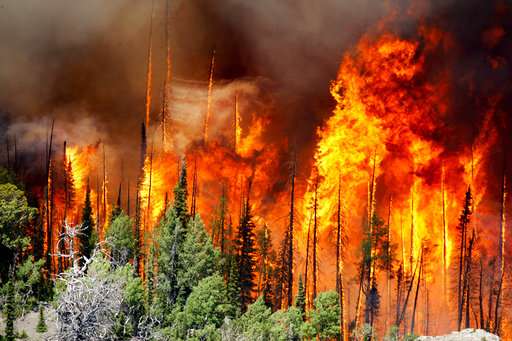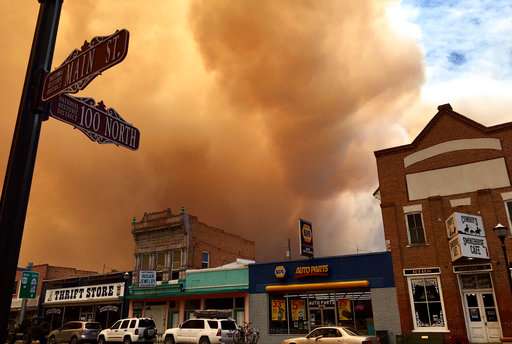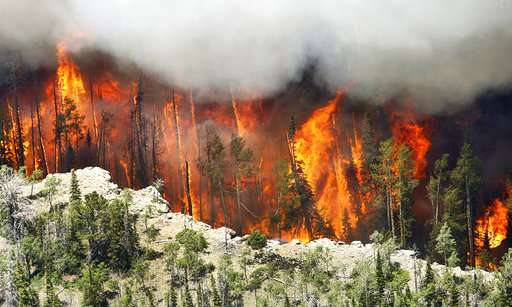Utah evacuees watched flames draw closer, smoke get thicker

A wildfire menacing a southern Utah ski town for nearly a week flared again, doubling in size for the second night in a row and torching more homes after residents fled the flames, officials said Friday.
The blaze was one of several burning in the U.S. West as extreme heat challenges firefighters.
The Utah fire that's charred 51.5 square miles (133.5 square kilometers) near the town of Brian Head has destroyed a total of 13 homes, Forest Service spokeswoman Cigi Burton said.
No one was injured because the homes and cabins were among 600 evacuated a day earlier from the alpine community that is home to the Brian Head Resort and near several national monuments and parks in Utah's red rock country.
Mountain bike and hiking trails, zip line courses and a water tubing hill that lure visitors to the resort in the summer were closed as firefighters try to hem in the flames.
At least 700 people have been out of their homes since Saturday, when the blaze was ignited by someone using a torch to burn weeds, authorities said.
High winds and hot weather have intensified the fire, driving it toward Panguitch Lake, a fishing and recreation spot with more homes.
Brian Head and eight other communities and campgrounds were under evacuation orders, fire spokeswoman Erin Darboven said. She did not know the total number of homes or residents affected.

Jim Moore said the flames were about a mile from his home in the community of Beaver Dam Village when he packed up his car and his dog early Thursday. At that point, the evacuations were not yet mandatory.
"At 2 o'clock in the morning, I could stand on my deck and see the flames," Moore said. "It was pretty scary."
Moore, who drove about four hours to Las Vegas where his girlfriend lives, said Beaver Dam Village is almost entirely made up of second homes and cabins and is largely a weekend getaway for Vegas residents.
LaRue Billings, who spends summers with her husband in their recreational vehicle near Panguitch Lake, said the couple could spot flames from their campsite Wednesday before they packed up and left Thursday.
"By the time we left, the fire had gotten quite a bit closer. We didn't realize that because the smoke was so dense," Billings said.
She said beetles have killed off trees in the surrounding forest, leaving lots of dried wood on the ground.
"I'm sure that had a lot to do with fueling the fire," Billings said.

The couple, who live in Hurricane, said they were camping Friday in a city about 20 miles away until they figure out where to go next.
The unidentified person accused of starting the blaze could face charges, officials said. Firefighting costs could rise to more than $1 million, said Jason Curry of the Utah Division of Forestry, Fire and State Lands.
In Arizona, astronomers fear a nearly 46-square-mile (74-square-kilometer) wildfire may have caused heat damage to a research telescope on a mountain northeast of Tucson. Paul Gabor, vice director of the Vatican Observatory, says the blaze came within probably 30 feet of the building but didn't cause it to catch fire.
Fire conditions are preventing telescope operators from examining the inside of the building. But Gabor suspects the heat damaged metal on the exterior and is concerned smoke could have damaged electronic equipment and mirrors on the telescope.
On the nation's largest American Indian reservation, which spans parts of New Mexico, Arizona and southeastern Utah, increasing fire danger led officials to ban fireworks and campfires outside developed sites. Ceremonial fires are allowed if a tribal burn registration is obtained.
In Southern California, firefighters made progress on a 5-day-old forest fire in the San Bernardino Mountains that has burned about 2½ square miles (625 hectares).
© 2017 The Associated Press. All rights reserved.




















